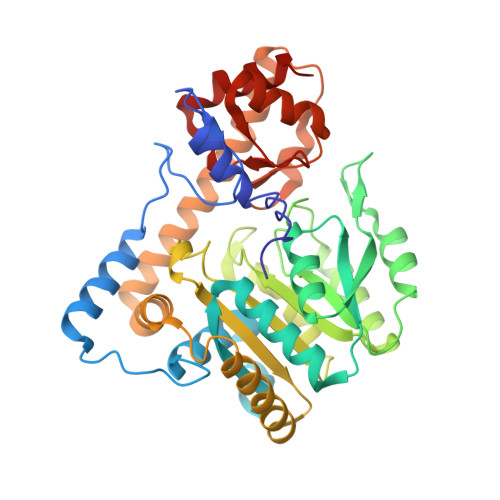Cocrystallization of a mutant aspartate aminotransferase with a C5-dicarboxylic substrate analog: structural comparison with the enzyme-C4-dicarboxylic analog complex.
Oue, S., Okamoto, A., Yano, T., Kagamiyama, H.(2000) J Biochem 127: 337-343
- PubMed: 10731702
- DOI: https://doi.org/10.1093/oxfordjournals.jbchem.a022612
- Primary Citation of Related Structures:
1CZC, 1CZE - PubMed Abstract:
A mutant Escherichia coil aspartate aminotransferase with 17 amino acid substitutions (ATB17), previously created by directed evolution, shows increased activity for beta-branched amino acids and decreased activity for the native substrates, aspartate and glutamate. A new mutant (ATBSN) was generated by changing two of the 17 mutated residues back to the original ones. ATBSN recovered the activities for aspartate and glutamate to the level of the wild-type enzyme while maintaining the enhanced activity of ATB17 for the other amino acid substrates. The absorption spectrum of the bound coenzyme, pyridoxal 5'-phosphate, also returned to the original state. ATBSN shows significantly increased affinity for substrate analogs including succinate and glutarate, analogs of aspartate and glutamate, respectively. Hence, we could cocrystallize ATBSN with succinate or glutarate, and the structures show how the enzyme can bind two kinds of dicarboxylic substrates with different chain lengths. The present results may also provide an insight into the long-standing controversies regarding the mode of binding of glutamate to the wild-type enzyme.
- Department of Biochemistry, Osaka Medical College Daigakumachi, Takatsuki, Osaka 569-8686, Japan.
Organizational Affiliation:


















